Academy Award-winning costume designer RUTH CARTER has played a significant role in bringing cinema, and history, to life long before she picked up the coveted Oscar statuette for her work on “Black Panther”. Over the course of her almost 30-year career, she has designed costumes for film and television alike, with over 40 films to her credit, and picking up three Academy Award nominations for Best Costume Design for her work on Spike Lee’s “Malcolm X”, Steven Spielberg’s “Amistad”, and most recently Ryan Coogler’s “Black Panther.” While many have pigeon-holed Carter into what she refers to as her “civil rights films”, Carter’s expertise reaches far beyond that into many different historical periods and genres. Her work in “Lee Daniel’s The Butler” spanned decades and told a visual history of the White House, its residents, and guests. Similarly, her costume design for “Sparkle” perfectly captured the look and feel of the 1960’s honing in on the girl groups and the “Motown Sound” while with “Daddy Day Care” she captured the everyday suburban middle-class world with her off-the-rack looks. As impressive as Carter’s work is in “Black Panther”, one look at a film like “The Best of Me” or “Abduction” demonstrates her well-researched range and depth of ability to find the specific tone, time and place for each story and character for which she designs.
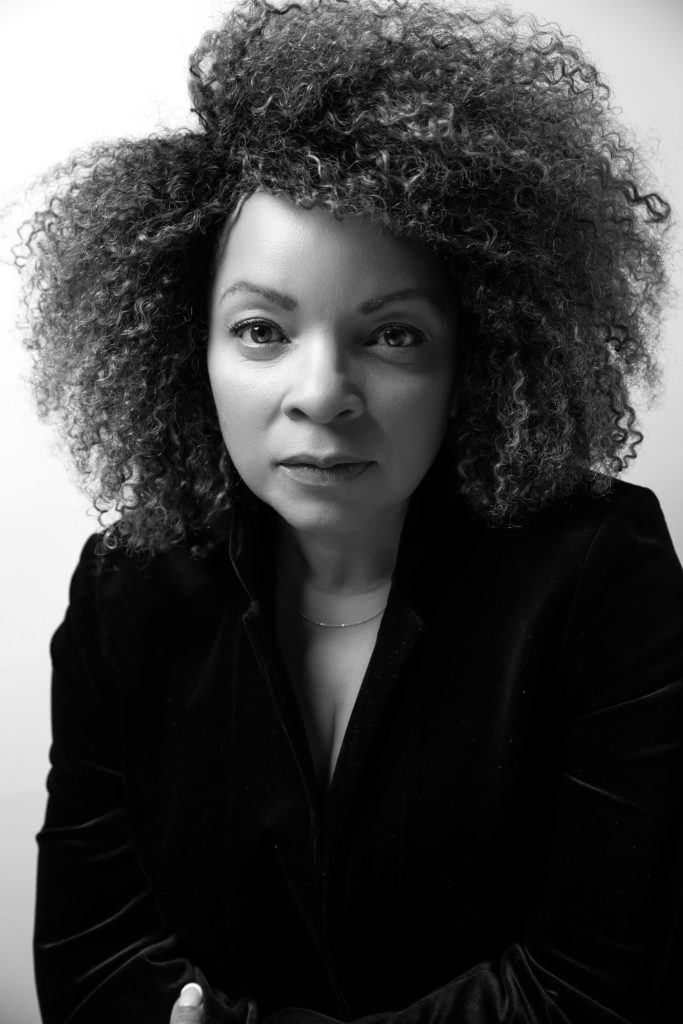
While Carter’s work has been predominantly for film as opposed to television, she is no stranger to the small screen thanks to some scattered one-offs or recurring work in episodic television or the occasional television movie. But now, Ruth Carter is at the costuming helm for Taylor Sheridan’s YELLOWSTONE, airing on the Paramount Network. Despite its episodic format, YELLOWSTONE indeed has all the hallmarks of a feature film in its scope and in Sheridan’s approach to filmmaking. And Carter’s work, along with that of production designer Ruth De Jong and cinematographer Ben Richardson, is integral to creating and establishing the visual and emotional texture and continuity of the series, not only for Season One, but as it is handed off to a new crew of master artisans for Season Two.

Starring Oscar and Emmy award winner Kevin Costner, YELLOWSTONE boasts an exemplary ensemble cast in this modern western that retains the mores and touchstones of the Old West which are such a recognizable part of the tapestry that is America. Costner, as John Dutton is a sixth-generation homesteader and patriarch of a powerful, complicated family of ranchers. The Dutton ranch is the largest contiguous ranch in the United States, but suffers from the conflicts arising from its borders – an Indian reservation, America’s first national park, and an expanding local town complete with land grabbers and corrupt politicians. In addition to Costner, other principal cast members adding to the fabric of YELLOWSTONE are Luke Grimes, Kelly Reilly, Wes Bentley, Cole Hauser, Kelsey Asbille, Brecken Merrill, Jefferson White, Danny Huston, and most notably, Gil Birmingham.

Speaking at length with Ruth Carter, her enthusiasm is contagious and her own standards of excellence and meticulous attention to history and details inspiring. Just listening to the passion in her voice makes one want to up their own game. Adding to the already daunting task of melding the look of the Old West with that of the 21st Century, Carter was working with Taylor Sheridan and Kevin Costner, both of whom are beyond familiar with the world being portrayed and examined in YELLOWSTONE. Sheridan lives this lifestyle. This pushed Carter ever further in her research and in creating the “looks” of YELLOWSTONE, finding and reaching out to longstanding ranch wear and workwear companies for the perfect jeans or perfect shirt, working with new fabrics, but then having to age everything to achieve the “lived in” looks necessary for the characters. As Carter herself states, “I dove deeper.” As comes as no surprise, Kevin Costner is completely custom made from head to toe, including his jeans, a brand which he loves and are no longer made but for which Carter found the correct gauge and weight denim and then custom made the jeans to Costner’s specifications.
As Ruth Carter succinctly notes, “Every project has its hurdles, and I think our hurdles mainly came from being authentic with outdoor wear, with ranch wear and with tribal customs.” With that in mind, she mastered them all from working with waxcloth to Native American beadwork of the Crow to Costner’s jeans and puffy vest as each garment, each detail, each bead, adds to the fabric of each character and to YELLOWSTONE as a whole.
Here’s what RUTH CARTER had to say in our conversation about the award-worthy costume design of YELLOWSTONE. . .
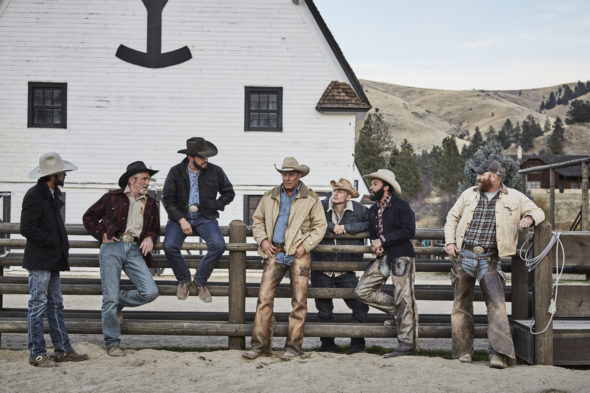
First, a slightly belated congratulations on your Oscar. Wakanda forever, indeed! So well deserved, Ruth. And now, I’m happy to get to speak with you about YELLOWSTONE. You just never cease to amaze me with the diversity and the eclectic nature of your costume designs.
Thank you. I’m so happy. Some people don’t really look at the whole picture. Certainly I’m happy and proud of my civil rights films that I was able to design and participate in. But there’s another whole side of things out there that I’ve done that kind of show you how a costume designer does her homework and can do any genre.
I look at your body of work from “Daddy Day Care” to “Sparkle”, and I have to say your costumes were one of the best parts of “Sparkle.” And then you do something very natural and easy like “The Best of Me”, a Nicholas Sparks novel brought to the screen. You’re dressing Michelle Monaghan with a flowing comfortable ease. I’ve seen all of your work over the years. And now as a first follow-up to “Black Panther”, I see YELLOWSTONE. Ruth, you have captured the utter and complete feel of the American Old West; with the designs, with the true to life denim, the leather chaps. But then you up the ante and you modernize it, and you take those chaps and you put some beautiful pocket designs on some of them, and you contemporize it. Then you throw in the diversity among the Dutton ranching family itself. We’ve got Jamie Dutton and his political aspirations. John Dutton, in his true western glory. And then the beauty of the traditional Native American costuming. Wow! Ruth, you cover it all in this series. I’ve got to ask, how much research you did for this amount of costuming, and everything that you had to infuse into it from our American history?
Well, I have to go to the source. When you work with someone like Taylor Sheridan, it’s very important that you know that he lives this lifestyle, he cares about the people that are part of this life, and he cares about the authenticity of how we present ourselves. Coming onto the team with him as our leader and our director and the writer of the story, and I’m then working with someone like Kevin Costner who has such a long history of knowing the west, the history of the ranch wear and the history of the Native Americans. You can’t deal with two people who are as strong as they are and come short-sighted. Going to the source to understand what’s important to Native Americans I’ve dealt with in a myopic way, the same we dealt with Africa [in “Black Panther”]. It’s the same things for the Native Americans. They don’t want to just be portrayed as one general group. The Crow are different from the Southwest, are different from the Northeast, and they can tell you the differences. They can tell you their traditions, and they can tell you the material, the beadwork, how different it is from place to place, from group to group. You don’t want to offend people, because they’re a big part of telling this story. Also, the cowboys. There is a difference in the hats from Montana to Texas. If you’re telling the story of the Midwest, you can’t have a Texan look. Also, I learned so much between the difference from a rodeo type of cowboy, to a rancher, to a ranch hand. I just learned all of the psychology and the looks, the difference of the look. It becomes very fascinating because it’s a whole world to learn that we are not given this history, we are not taught this history, in school.

For me to see a film like this and your attention to detail, and as you mentioned the differences just in the hats that they’re wearing, I have to ask, is there anybody who wears cowboy boots, leather chaps, and a hat better than Kevin Costner? You have him looking just so perfect and in that signature vest. Vests are so important to his character John Dutton.
Nobody I can think of. Because of who he is, we designed and made everything. From his shirts to – he had a particular type of jeans that he liked and I had to go to a special company that can make denim because the style of jeans that Kevin Costner likes they don’t make anymore. We had to go through the steps of how to wash out the denim and get the fade perfect. How to not have those whiskers, or if we have some, have them in the right place so they look real. It was a process. He’s custom done from head to toe. He looks great! He’s not bad on the eye, that guy.
How you’ve outfitted him is just absolutely gorgeous. And then I took a look at the cowboys and the ranch hands. Were you using off the rack Levis for them, or did you custom make their jeans with a particular gauged denim?
I have two vests. We went to really special companies that do beautiful [work]. We did Kimes Ranch, so the great denim. We went to Filson. We went to those companies that do outdoor wear or ranch wear that had really stepped up their game and are presenting the cowboy in a more modern way. It was those companies that had those great fits. Once we found a great fit for one of the other characters we stuck with that. A lot of people worked with us too. Filson and other companies that do ranch wear, work wear. That stuff is actually built for the real guys, so it’s built to last. When you get it, it’s like someone sent you a leather suitcase, and it’s in the form of a vest. The time it took for us to break that stuff down was really that was the hard part because we wanted to show that guy that has owned these clothes for a long time; has roped some cattle and has lived in the west, in the inclement weather. We didn’t want it to all look brand new, and that was really hard ’cause we had to provide for stunt doubles and multiples, and things like that.
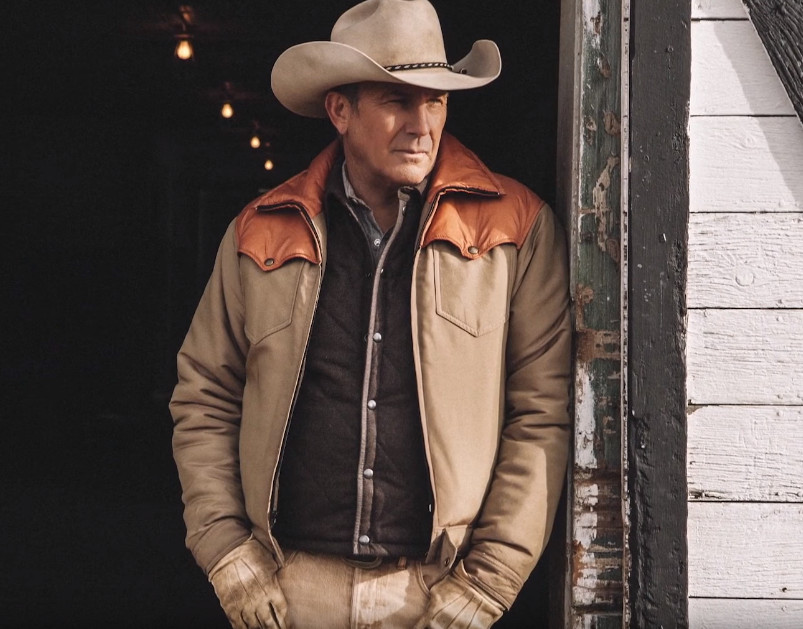
And this is not a small ensemble cast, let alone when you add in all of the extras and the guest stars that pop in on the various episode during the season. How many costumes do you think you actually had to put together for this first season of the show?
Oh my goodness! It’s hard to count because there’s so many characters. Like when we dealt with the daughter [Kelly Reilly]. We really worked hard on building her character. She would make a change of clothes in the middle of one episode just because she could. When she arrived she looked one way. When she puts on her ranch wear she looks another way. She’s being sexy and she looks another way. In one episode she could have more changes than anybody. We really worked hard on telling her story because her arc was so far reaching over so many episodes. We had to sort of really come together with a story that worked, that would explain who she is and how shrewd she can be. But also how soft she is at the same time. Her character was really casual. We worked really hard together to get it right.
She’s kind of like the flower amidst the thorns of all the men. That is really what sells her character arc and the different sides of her; how she can be daddy’s doting daughter, and anything daddy wants he gets, and then she can turn on her brother on a dime. That really is reflected in the costume that you have designed for her. That’s one of the strongest character arcs in the series. Kelly’s character is reliant upon costume.
Yes, exactly. Thank you! And Kelly Reilly really does know herself. Any of us can possess the ability to transform. But the knowledge of how you transform and what you transform into to make it believable, you really have to truly know who you are, and I think she does. In working with an actress that’s very clear on how she morphs into these characters, you have to pay attention, you have to work really closely together because anything could set that pace off for her. And you want to stay on pace. That becomes the hard part of being a costume designer because you’re infusing your art on somebody else’s and that becomes a very sensitive matter.

Something else that you do so beautifully is dressing Wes Bentley. Take a look at Wes Bentley and his character of Jamie. He is a lawyer, he’s got political aspirations, and you’ve got him in some mighty fine tailored suits.
We spared no expense. I felt like if John Dutton represented high-end ranch wear, then Jamie represents the best of what a business attorney could look like that represented him. I was very conscious of creating more of a story that speaks to how politics looked at that uniform. He would be clever in how he played his politics and at the same time he’s the son of a wealthy man.
Everything that you dress Wes in, all has very sharp lines, clean lines to it that really mirror what you’re talking about with him being a sharp businessman, sharp in politics. That’s reflected in those lines that you create.
He himself has a very edgy look. He has these piercing blue eyes and this great head of hair, this darkness and dark quality to him. The clothes have to kind of follow suit to the main that you’re dressing at the same time. He was perfectly cast.

Absolutely! And then you get a flip side when you’re dressing Gil Birmingham, because you’ve got him wearing a contemporary casual jacket, open shirt, maybe a tie. Plaids not solid colored shirts, but the small checkered plaids but not a gingham. And then you have to balance that with the outstanding Native America costumes and headdresses.
Gil was all custom designed, everything was made for him. He’s a very big man, and we wanted to show the Gil Birmingham and his character Rainwater that has been Harvard educated, has lived on both sides of the track. We didn’t want to buy into the bolo ties and the western cut blazers or anything, because it would be too on the nose. We wanted to present something that was unexpected. I sort of thought that if I combined patterns and color, that it would speak to his Native American roots without us actually saying it.
I think you did a perfect job there because even when he’s dressed in contemporary clothes, you still get that more casual rooted to the Earth feel about how he’s wearing them. And particularly those suit jackets, because I know so often there are the double vents in the back and that creates a distinct kind of style and person, and we don’t see that in him.
I actually don’t like those double vents. It’s rare that you’ll see something that I have done, where I use the double vent. It’s just not good.
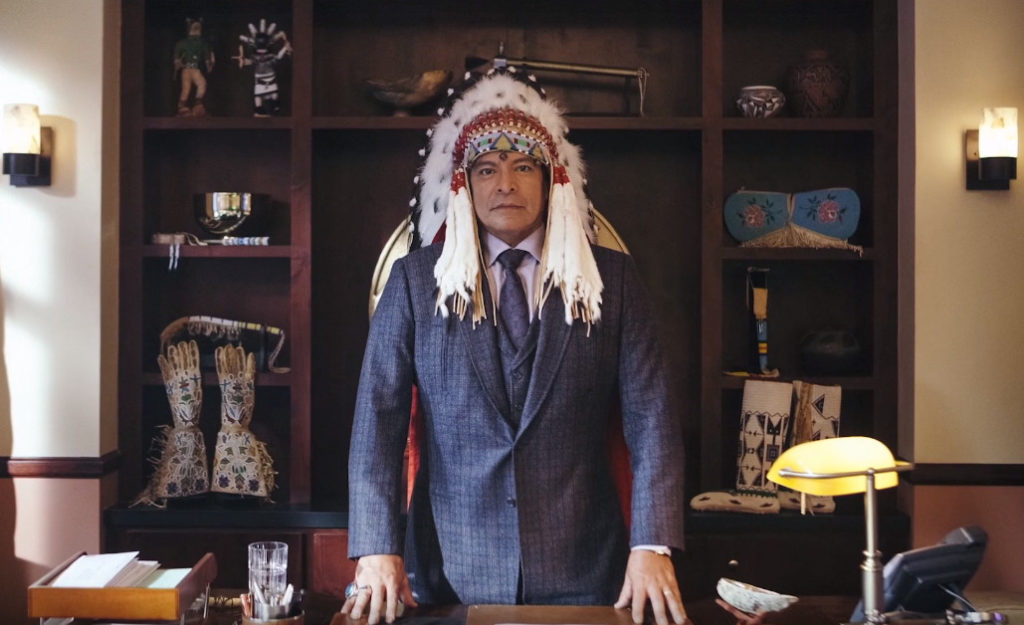
It is not a good look. But then you also have the contrast with the Native Americans, with their contemporary clothing as well. Just like you have the ranch hands and the cowboys to counter Costner’s Dutton, you have the actual reservation people.
It’s wonderful! Rainwater’s driver – I took one look at that guy, his own personal style, and I said, “There’s where my jumping off point is.” I was really proud that when I sent his clothes he loved them. And he really didn’t have to wear his own stuff, that I so loved. He had style, he looked professional, yet he looked perfectly rooted in his culture. I think that’s what I try to do with all of the Native American actors that were portrayed in Yellowstone. You see Monica Dutton [Kelsey Chow] going to the funeral and she wears this very sacred necklace that is from her south, not southwest but the Montana Crow reservation. And it’s almost like a dream catcher kind of a spiral thing. Wherever I could I wanted to create that subtle story or be very direct in their tradition. Not unlike “Black Panther.” I’m telling you, it’s about the awareness of what things mean to people and when things are mixed wrong they make people that know it angry. I really didn’t want to make a mockery of what we were trying to do. I wanted to bring authenticity to it.
Since you mentioned “Black Panther”, I have to tell you Ruth, when I saw the movie for the first time at the press screening last year, I came out of it and wanted to immediately know the backstories of each of the Wakandan tribes. I’m looking at those green outfits that are just jumping off the screen and was like, “I want to know more about these people.” This is what I want to see in subsequent “Black Panthers”, more about each of these individual people. You do the same thing here with YELLOWSTONE; not as colorfully, but just lush and textured and beautiful and gorgeous and eye-popping as Black Panther, because it’s two different worlds, but the exact same thing. You make me want to understand more about who these people are. And what you keenly do with the Native Americans is thanks to Taylor’s writing but also thanks to your work in their costuming. You get away from the stereotype of the fall down drunk in the street, always slovenly and sloppy. I saw none of that here.
Right, exactly. Yes, and yet he still spoke to their living and their lifestyle. They’re out in their reservations that are sometimes deep into the desert, and they’re in a trailer park and they lived in trailers. There’s a sense of community. And then he dealt with the suicide rates and all of that. Taylor [Sheridan] is the most authentic at what he does. I applaud him for that and I wanted very much to be instructed by him, to be led by him. And in doing so, I knew that I had to take a deeper dive into what these things are.
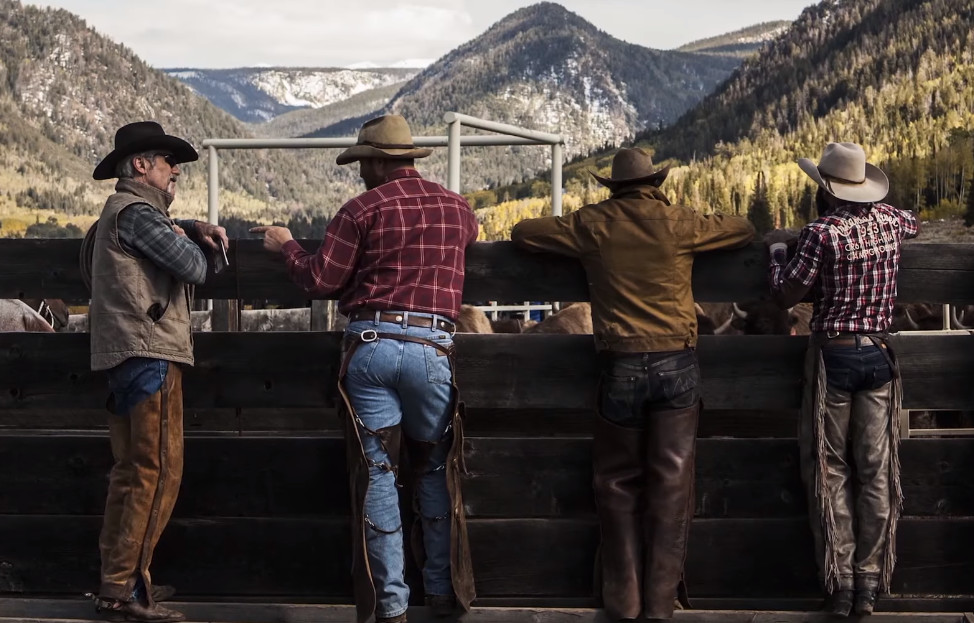
There are a lot of costume designers that would not have taken the deeper dive into “The American Old West.”
Yeah, but they don’t get picked to work with Taylor Sheridan!
That’s right! I think about things that you’ve done like “Lee Daniels’ The Butler” and the decades that you cover there and the distinctive styles of each first lady of each president, of the guests.
That was a big bite and in the effort to tell Cecil Gaines story we had to tap on all of those presidencies, and that was really difficult.
You just keep surprising me, Ruth. Just when I think you can’t top something like that, “Black Panther” comes along. And then YELLOWSTONE comes along. And the subtlety of what you do here is what makes this costuming so integral to the storytelling.
Thank you, thank you! I appreciate you saying that, ’cause you know what? I work hard. I work hard. And if this Oscar had not happened, I’d still be working, I’d still work hard. But I’m just saying, the Oscar really put light on me like, “Hey, little did you know, there’s this girl who works the costume design who, she’s not here right now ’cause she’s breaking her butt trying to get something done properly.” You know what I’m saying? I have been behind the camera and very happy there. All I can say is just that I prayed for having the honor of getting an Oscar. And what I wished for was not necessarily the popularity but for the recognition for all of the hard work that was put into all of those films.
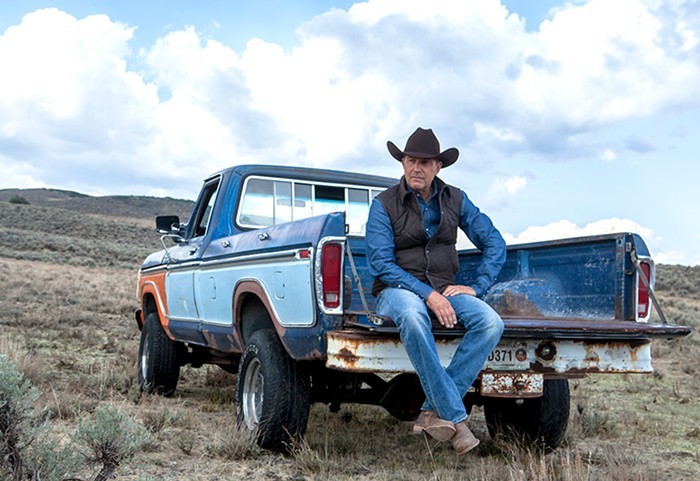
And here again, with YELLOWSTONE, this is a lot of time-intensive hard work that you’ve put into the costuming here. As I said, the authenticity factor is absolutely amazing. I can think of so many guys right now that had done the John Ford pictures, theJohn Wayne pictures, all these westerns out in Monument Valley and they would so happily jump into any of these garments that you have designed.
It turns out that some manufacturers were picking [these YELLOWSTONE designs] up and selling them! From the pictures, they recreated the ski vest we made, the orange and beige one that we made for Kevin. They started selling it on the Internet and Paramount had to send cease and desists letters. It’s crazy!
Was there any kind of fabrication beyond working with the denim, but is there any other fabrication that was a discovery or proved challenging? So many times you stumble on a new fabric or you work with a fabric that is particularly difficult, challenging or particularly effective for the costuming that you’re doing. I know Sandy Powell found this Umisima fabric a number of years ago for “Cinderella.” Then, of course, with “Mary Queen of Scots” we just saw every kind of denim known to mankind used for all the costumes. So, I’m curious if there was a fabric that you found, or worked with in designing costuming for YELLOWSTONE, even be it the leather for tanning the leather for all of these various stylized chaps that we have that resonated with you.
Well, there’s a couple of things that happened. One was the tribal bonnet that Rainwater wears. We had that custom made. And when I had it in the office, some of the Native Americans that walked by and saw that we had this tribal bonnet, they came and told me that it can never touch the ground, that the feathers had to be maintained at a certain way. It went into my office and we had a special stand made for it so that it could be honored in the proper way. They were very serious about that. There was wax cloth that we were using. Especially for the son who married Monica. Wax cloth is the rainwear that really is that denim jacket that you can wear out in the elements and it’s waterproof. What we found with working with wax cloth is it’s very hard to sew. The process of keeping the wax fresh does require some maintenance, so that was one thing. And then there was the wrist stop that I used with Kevin Costner’s main puffy jacket, the orange and beige one. That had to be special ordered because it’s a fabric that is used for boating, sailing. It’s not a fabric that you can just go to any old fabric store and find. It was all very much special ordered comes in very limited colors and so we had to have it dyed. Every project has its hurdles, and I think our hurdles mainly came from being authentic with outdoor wear, with ranch wear and with tribal customs.
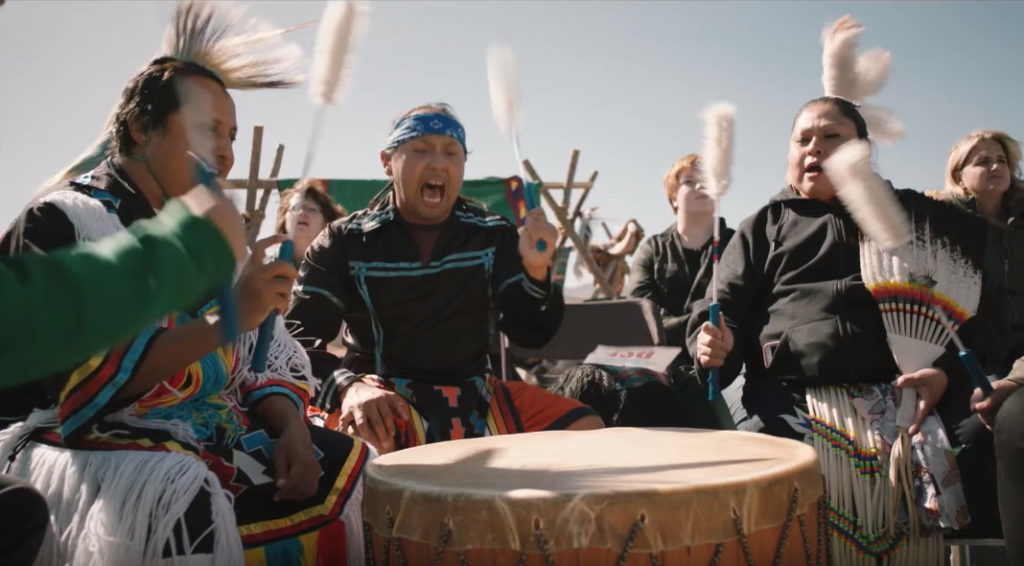
Well, I think you nailed everything just so perfectly, Ruth. I have to ask you about the jewelry, Ruth, Did you make or hand design the jewelry in the show, especially the Native American jewelry?
I actually got it right from the source. We had one girl who was Native America that worked in the accounting office, and she presented me with a lot of pieces. They came from the source because I was educated on the type of jewelry that was made by the Native Americans that comes from that region [ the Crow]. So I had another art person who was in extras casting was also an expert and had resources and she brought a whole lot of different things in for me to see. I preferred that because I felt like I was also giving back to the community who so desperately need the support of a film that’s being shot there and is part of the subject. I just felt we should honor them and also try to buy from them.
With Season Two of YELLOWSTONE shortly upon us, did you do costuming for the upcoming season or did you lay the groundwork with Season One and pass it off?
Season Two started as “Black Panther” was released. From “Black Panther’s” release I was shot out of the cannon. I couldn’t come back and do Season Two, but I did come in and I worked with Kevin for one week to make sure he felt comfortable that who I was handing off things to was going to keep the style going. I had mass fittings with Season Two with the principals and made sure that the first few episodes were kind of on their way.

You’ve got a win-win going on here, Ruth. People are still loving “Black Panther” and they’re loving YELLOWSTONE. Please tell me that you’re going to come back for “Black Panther 2.
I hope so. I think so. It feels like it. I had a really strong team. We’re hoping for all of us to come back again in the next one and continue the dream team.
Ruth, you are truly, truly one of those on my costuming dream team.
Oh, thank you! I appreciate your enthusiasm, and I really am proud that I’m doing things that people enjoy.
by debbie elias, exclusive interview 04/04/2019












